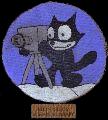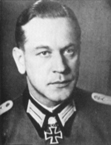Bullwinkle58
Posts: 11302
Joined: 2/24/2009
Status: offline

|
quote:
ORIGINAL: AW1Steve
No , but a wall of DD's banging away is a lot rougher against a diesel powered SS with a 7 to 10 knt speed and a couple of hours endurance. The DD's can do nearly 40KTS for days. And they don't have to find or sink the sub. They just have to hold him down, or keep him away from his targets.
As usual, one of your posts in response to one of my posts, in response to one of your posts . . . on ASW . . . made me go do some reading. Thanks for delaying my bedtime by 90 minutes. 
Before I get to the source documents let me respond to the above re the game and RL.
A "wall of DDs"? In the IJN's dreams. Other than carrier TFs and some very important troop-transport missions Japanese TFs were minimally, or not, escorted. Regular island supply runs, which were the most common submarine target of the early and mid-war period, were not granted DDs of any kind. Escorts were of the "PB" variety in game terms. Converted merchants with minimal, or no, sound gear, depending on visual sightings and luck, and a few dozen (sometimes less) DCs rolled off stern racks.
Tactically, the sub's actions depended a lot on time-of-day, as well as local geographic conditions. A lot of patrols were at choke points, headlands, bay exits, etc., in shallow water and with reefs and rocks a constant threat. That is to the skimmers' advantage. In areas with daytime aircraft patrols, which included major island bases such as Truk and Kwajalein, daytime patrols were at PD. Flank battery life was about an hour, but at two knots there was more than enough for a full day down.
If a convoy with active sonar was coming toward a daytime boat at PD the geometry of the track became very important. Japanese active gear had, at ten knots, for what I can find, an effective range with a good operator (rare) of about 2000yds. One nautical mile. A sub at two knots needs 30 minutes to move that distance. But an active sonar banging away continuously could be heard, depending on water conditions, at least five miles away, enough to get a bearing and thus bearing drift info for TMA, if not a full mo-board relative motion solution. (No range info.) Thus my previous comment that the sub could get out of the way most of the time.
Attacks are made off the beam (optimally) and the quarter sub-optimally. An active set with trainable sound heads (many smaller escorts had a sound head hung over the side on a wire) is only looking at the sub for a small portion of its route. Operators will tend to favor the arc forward as well. Another advantage for the sub. As well, an approach course would minimize the sonar target aspect of the hull.
Even so, it's a big ocean, and there are hundreds of descriptions of failed attacks in patrol reports due to the sub being unable to close the track in time, or having enough speed to overcome the zig plan, while submerged. A lot was learned in 1942 in this area; one reason the submarine community moved heaven and earth to deploy radar in 1942. Radar changed everything. (Not that well modeled in the game due to reliance on DL and a lack of true sensor models, but it's a tactical issue, not operational.).
If the convoy were encountered at night, by radar, everything changed. A surfaced sub is a very poor active sonar target, plus it had detection time far above the 2000 yd active sonar range. With a 10kt convoy the sub had 100% more surface speed to do an end-around and place itself on the beam of the passing convoy several hours hence. Japan never got good at radar detection either. There were a few efforts to get raw radar detectors deployed so skimmers could see that "somebody" was using radar in the vicinity, but they never got to an RDF level and were never widely deployed. (Same story with all their electronics. Their industry just couldn't get it done.) Once night attack doctrine was available to USN subs the kill rates soared, especially once the fish worked.
I found two excellent primary sources.
The first was the post-war report of the technical teams which went to Japan and tore into the gear, records, logs, and conducted interviews with officers and men of the surviving IJN ships before it all was lost or "re-remembered." It's an interesting report covering many aspects of the naval war. ASW is only a small part of it and the potion quoted is a yet smaller part of the ASW section. If you want to know all about the internal workings of Japanese DC fusing this is the read for you. I believe I have quoted from this document previously in discussion of sonar hardware. But the most relevant section:
http://www.ibiblio.org/hyperwar/USN/rep/WDR/WDR58/WDR58-3.html
"
Section III
Japanese Anti-Submarine Warfare and Weapons
. . . 3-7. The Japanese repeatedly demonstrated facility in detecting and locating submerged submarines by using sonar. Their underwater listening gear was fairly good and could frequently pick up our submarines at ranges of 2,000 meters or more when the listening ship was stopped or proceeding at very slow speed. A damaged submarine with a high machinery noise level, such as a reduction gear click, could of course be heard at a far greater distance than an undamaged submarine running silent or creeping. Their echo-ranging equipment was of mediocre design, roughly corresponding to the early U.S. QC sonar of about 1937. The emphasis which the Japanese placed on sonar devices is clearly shown by the unnecessarily large amount of space allocated to such equipment in the already cramped quarters of their ships. At sea it was customary to man the hydrophone set continuously and to operate the echo-ranging gear at least fifteen minutes in every hour. Small escorts were generally provided only with listening gear, in some instances just a crude hydrophone lowered over the side. Japanese scientists were cognizant of density layers and temperature gradients in sea water and their effect on sound transmissions in echo-ranging detection work. However, anti-submarine vessels were not equipped with bathythermographs and no tactical use was apparently made of the small amount of information of operational value issued by the Japanese Hydrographic Office."
(Possibly of interest to players of the game, Japan had virtually no air-surface hunter-killer TFs as are employed in the game from the first day.
"3-6. Only one small land-based "hunter-killer" air-surface group existed, and even this was not organized until early 1945.5 The group covered the East China Sea between Formosa and Shanghai and was comprised of five surface ships (DE types) known as the 102nd Surface Squadron and about 20 Navy fighters (ZEKES) of the 934th Squadron, Shanghai Air Force. These planes were equipped with both radar and magnetic airborne detectors. For routine patrol, the planes usually carried two 60 Kg. depth bombs and, when sent out to attack a previously detected submarine, carried one 250 Kg. depth bomb, although the 250 Kg. size depth bombs were also sometimes carried on patrol. Both the planes and surface escorts were provided with voice radio but could communicate only for short distances and frequently were unable to communicate at all due to technical difficulties.")
The other document is massive and is a huge archive of PDFs of images of actual report pages. I can't quote from it, but it is the full report of the technical teams. It covers land as well as naval technology and tactics. In the ASW sections, which I did skim, it includes hand-drawn diagrams by escort COs showing DC patterns, re-acquire maneuvers, convoy patrol sectoring, etc. in great detail. It does not so far as I could tell segment the data into eras, which would be highly relevant. In that sense a 7-DD screen, which is described, would be very difficult to penetrate. But how many 7-DD screens were ever deployed? Anyway, it was a hypertext Table of Contents and the actual PDF images are very easy to read. I suspect the dev team used this document very extensively.
http://www.fischer-tropsch.org/primary_documents/gvt_reports/USNAVY/USNTMJ%20Reports/USNTMJ_toc.htm
Title page:
"MICROFILM PUBLICATION 2
REPORTS OF THE U. S. NAVAL TECHNICAL MISSION TO JAPAN
1945 – 1946
Operational Archives
U.S. Naval History Division
Washington, D. C.
December 1974
ORDERING INFORMATION: This publication, consisting of 13 reels of 35-millimeter microfilm, is available for public sale at a cost of $5.00 per reel. These reels also circulate on inter-library loan. When purchasing these reels, please forward a check or money order, made payable to the Department of the Navy, to:
Operational Archives
Naval History Division
Washington Navy Yard
Washington, DC 20374
Inter-library loan requests should be forwarded to the same address.
FOREWARD
The U.S. Naval Technical Mission to Japan was established on 14 August 1945. The purpose of this organization was:
“... to survey all Japanese scientific and technological developments of interest to the Navy and Marine Corps in the Japanese Islands of KYUSHU, SHIKOKU, HONSHU, HOKKAIDO; in China; and in Korea south of latitude 38şN. This involved the seizure of intelligence material, its examination and study, the interrogation of personnel, and finally, the preparation of reports which would appraise the technological status of the Japanese Navy and Japanese industry. “1 Between September 1945 and November 1946, the Naval Technical Mission operated in Japan under the direction of the Chief of Mission, Captain Clifford G. Grimes, USN. During this period a total of 655 officers and men served with the organization. 185 separate reports were published on various aspects of Japanese naval equipment and other technical developments of naval interest.
Although it was reported that 500 copies of each report were prepared, these documents are now rare. In the light of the extensive interest in the series by students of World War II history, it was deemed desirable to prepare the following microfilm publication.
U.S. Naval Technical Mission to Japan, History of Mission."
< Message edited by Bullwinkle58 -- 5/23/2014 2:15:45 PM >
_____________________________
The Moose
|
 Printable Version
Printable Version




















 New Messages
New Messages No New Messages
No New Messages Hot Topic w/ New Messages
Hot Topic w/ New Messages Hot Topic w/o New Messages
Hot Topic w/o New Messages Locked w/ New Messages
Locked w/ New Messages Locked w/o New Messages
Locked w/o New Messages Post New Thread
Post New Thread